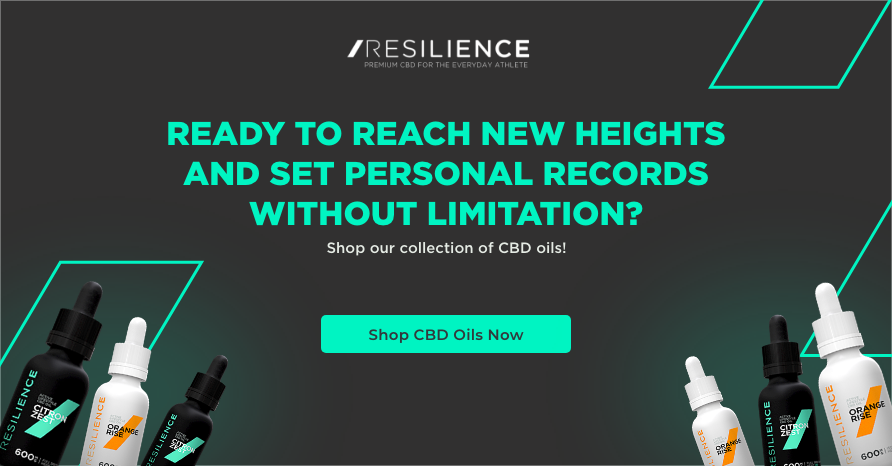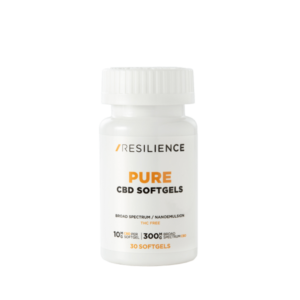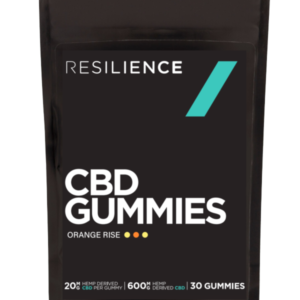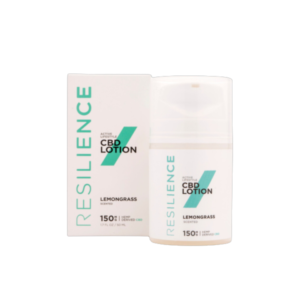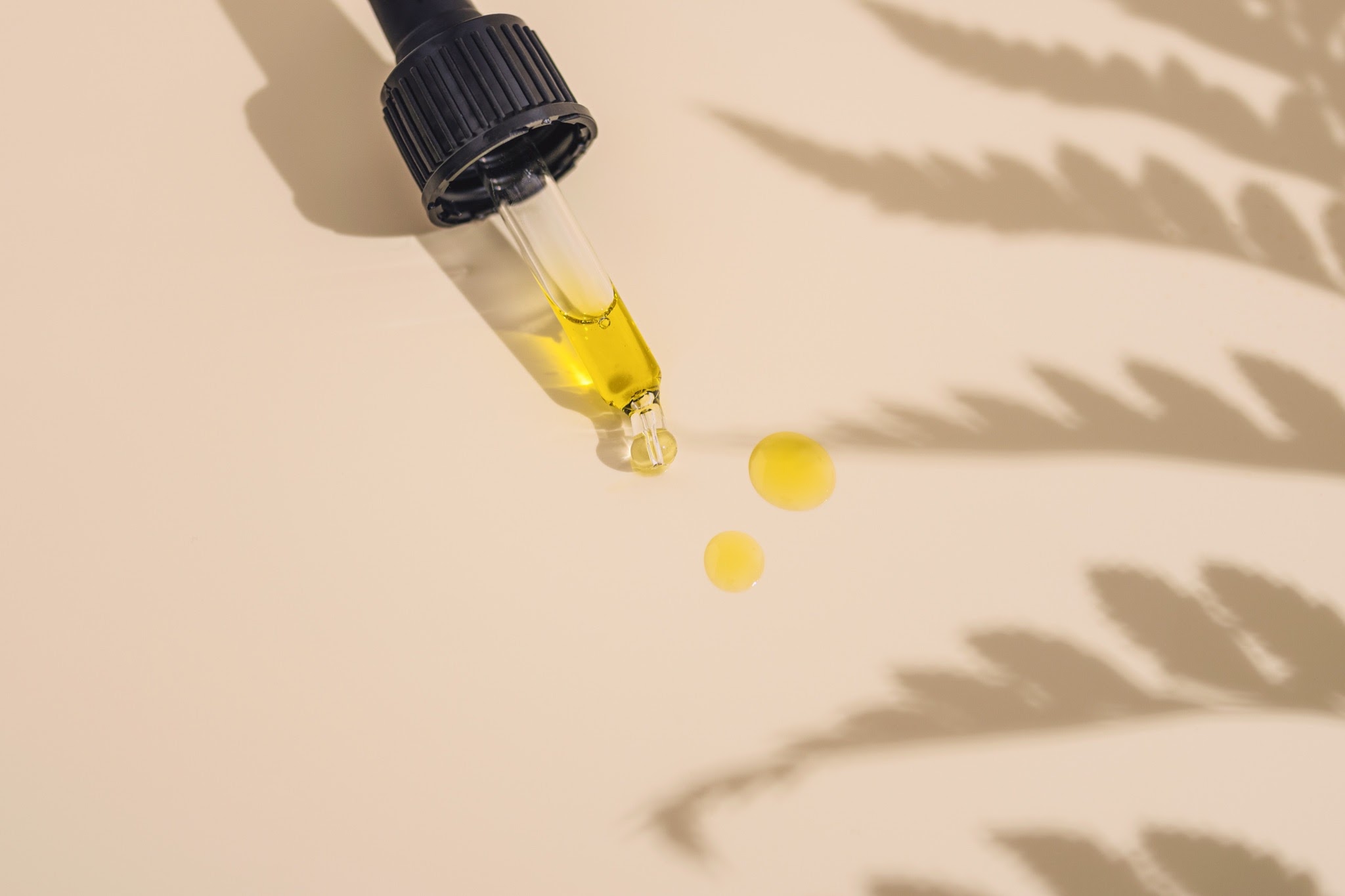
Many athletes are incorporating CBD products into their pre- and post-workout routines to promote recovery and experience the benefits of full-body wellness. But what exactly is in CBD, and is it safe for your body?
Generally, yes. CBD is a plant-based compound that may tout many benefits within the human body. That’s because it contains phytocannabinoids, which interact with the receptors in your body’s endocannabinoid system to promote relaxation and recovery.
Given its chemical makeup, CBD is believed to have anti-inflammatory properties and therapeutic effects on the body. Because they promote relaxation and recovery, CBD oil, CBD softgels, and other forms of CBD products are great for encouraging a healthy immune system or reducing inflammation in the body.
This guide will cover everything you need to know about plant-based phytocannabinoids and endocannabinoids and explore the benefits and functions of each.
Key Takeaways
- Endocannabinoids are compounds that your body produces naturally. They bind to receptors in your endocannabinoid system to trigger a response from your body to regulate your body’s systems and processes.
- Phytocannabinoids are plant-based compounds that interact with the cannabinoid receptors found in your body’s endocannabinoid system. This system regulates many of your body’s processes and functions to maintain homeostasis.
- There are over 100 known phytocannabinoids in hemp and cannabis plants. The most common include THC, THCV, CBD, CBDV, CBG, CBN, and CBC.
Endocannabinoids vs Phytocannabinoids
Both phytocannabinoids and endocannabinoids are a type of cannabinoid. These cannabinoids interact with your body’s endocannabinoid system by binding or interacting with endocannabinoid receptors.
As a result, the endocannabinoid system regulates functions and starts processes within your body to promote homeostasis. In addition to phytocannabinoids and endocannabinoids, there are also neutral cannabinoids, which can form when cannabis is exposed to prolonged exposure to light or heat.
Understanding Endocannabinoids
The term endo means in, thus endocannabinoids are molecules produced naturally within your body, and are key components of your endocannabinoid system. When they bind with endocannabinoid receptors, endocannabinoids trigger bodily processes such as:
- Metabolism
- Inflammation response
- Skin and nerve function
The two known endocannabinoids your body produces are:
- Anandamide (AEA) – This endocannabinoid is a neurotransmitter found in your brain. It binds to both CB1 and CB2 receptors in both the central and peripheral nervous systems. Although research is ongoing, AEA is thought to play a role in appetite, memory, mood, and physical discomfort. It may also impact the reproductive system.
- 2-arachidonoylglycerol (2-AG) – 2-AG is found in the central nervous system where it binds to CB1 and CB2 receptors and helps regulate immune, cardiovascular, reproductive, skeletal, and respiratory functions.
Both AEA and 2-AG are necessary for the body to function normally.
Understanding Phytocannabinoids
The prefix phyto means plant-based. Therefore, it can be understood that phytocannabinoids are derived from plants—the cannabis plant, to be specific. In fact, there are over 100 phytocannabinoids in the cannabis plant, although not all of them have been sufficiently studied.
Some of the different phytocannabinoids that are known to interact with your endocannabinoid system include:
- CBD
- CBDV
- THC
- THCV
- CBG
- CBN
- CBC
Research into phytocannabinoids and how they impact your endocannabinoid system is ongoing. Although, it’s generally understood that each type of phytocannabinoid induces a different reaction when bound to endocannabinoid receptors.
While there are still many questions about how these naturally occurring cannabinoids can promote health and vitality, we do know their properties. This knowledge lays the groundwork for future inquiry into the use of phytocannabinoids to answer the question, “what is phytocannabinoid behavior, exactly?
Cannabidiol (CBD)
Research into CBD has blossomed in recent years as consumers have started to ask questions like “How is CBD oil made?” and “How is CBD extracted?”. CBD is derived from hemp or cannabis plants and doesn’t produce the high that THC does. Today, CBD is found in many products, including:
- Oils
- Tinctures
- Gummies
- Creams
- Lotions
- Pills
- Capsules
- Vape liquids
The viability of whether these products offer potential health benefits to the user is still being tested, but it’s suggested that CBD might:
- Aid in restful sleep
- Help with stiff joints and muscles
- Promote a restful and calm mood
- Support general wellness, health, and vitality
How your body reacts and benefits from CBD products will vary depending on your body composition and dosage. As such, your experience with CBD may not be the same as the experience of one of your friends or family members.
Cannabidivarin (CBDV)
CBDV possesses a different molecular structure than CBD, although it is similar. Like CBD it is non-psychoactive. You’ll typically find CBDV in products that have very low levels of THC.
CBDV interacts with the endocannabinoid system to regulate the peripheral nervous system. Many of the supposed benefits of CBD oil may also apply to CBDV, which include improved sleep, feelings of calmness, and ease of discomfort.
Tetrahydrocannabinol (THC)
THC is the compound found in marijuana that acts quickly once it enters the body to produce a “high” feeling. Its psychoactive properties are believed to be activated when it binds to the CB1 and CB2 receptors in your body.
In fact, THC mimics the abilities of AEA within the endocannabinoid system, which is the “feel good” endocannabinoid that’s naturally produced by your body.
Tetrahydrocannabivarin (THCV)
THCV is closely related to THC. However, its molecular structure differs slightly, meaning it’s relatively less psychoactive than THC. Rather than interacting with the CB1 receptors within the body’s endocannabinoid system, THCV blocks the receptor. This may repress your appetite, reduce nervousness, and regulate the circulatory system.
Cannabigerol (CBG)
CBG is found in small quantities in the cannabis and hemp plant and is critical to the production of CBD and other phytocannabinoids. In fact, all of the other cannabinoids produced in these two plants are derived from an acidic form of CBG, known as CBGA.
There are a few things you should know about CBG, including:
- It’s difficult to produce – The acidic form of CBG exists primarily in young plants. Researchers have been trying to find ways to grow mature plants with higher levels of CBG.
- Plants high in THC and CBD have low levels of CBG – When plants mature, CBG is converted to THC and/or CBD. This means the remaining amount of CBG is very small.
- Products containing CBG can be very pricey – The difficulty in producing plants with high levels of CBG makes products that contain significant amounts of CBG very expensive. A good alternative is to purchase full-spectrum CBD products, which contain trace amounts of CBG.
Cannabinol (CBN)
When THC is heated or aged, it converts into CBN. As a result, CBN is somewhat psychoactive. Although, not as psychoactive as THC itself. CBN is a popular cannabinoid used in gummies since it produces milder effects than THC. It’s often believed to aid sleep and joint discomfort.
Cannabichromene (CBC)
CBC develops after CBGA is exposed to heat and light. Unlike other cannabinoids, it does not interact with the CB1 and CB2 receptors within the endocannabinoid system. Instead, it’s believed to help brain development, specifically pertaining to memory, mood, and physical discomfort.
How Do Phytocannabinoids Support the Endocannabinoid System?
Your endocannabinoid system is your body’s main regulator. This means it’s constantly helping your body maintain homeostasis by regulating various bodily functions and systems.
When something isn’t right in your body, the endocannabinoid system strives to fix it. The endocannabinoid system consists of three parts:
- Endocannabinoids
- Receptors
- Enzymes
Your body produces endocannabinoids when it needs them. They then bind to the receptors to trigger a response. Then, when homeostasis is regained, enzymes break down the endocannabinoids.
So, what are phytocannabinoids roles in your body? Sometimes your body doesn’t function optimally. It may struggle to produce the endocannabinoids needed to jumpstart responses. When you ingest phytocannabinoid-containing products, like CBD, you might be giving your body a boost of agents that can help keep your body running properly.
Phytocannabinoids and You
Now that your head is swimming with acronyms and systems, let’s take a minute to reflect on how phytocannabinoids can be connected to your needs as an active, healthy person.
The most commonly found phytocannabinoid in commercially available products is CBD, thus most research conducted to date has centered on CBD. There are various CBD products available that athletes can incorporate into their daily routines, including:
- CBD lotions and creams – After a tough workout, you want to recover as quickly as possible. Topical applications of CBD products may help ease joint and muscle stiffness and help you get back out there to dominate your next workout session.
- CBD gummies – The key to recovery and performance is quality sleep. Nibbling on a few CBD gummies (specifically ones that contain CBN) before bedtime may encourage a healthy and restful sleep that fuels the next day’s workout.
- CBD oils – Do you experience feelings of unease and uncertainty before an important event? A few drops of CBD oil under your tongue may help you feel more calm and relaxed before a big game or race.
Resilience CBD: A Trusted CBD Source for Athletes
Phytocannabinoids, the plant-derived compounds found in the hemp plant and cannabis plant, may work with your body’s endocannabinoid system in a similar manner to endocannabinoids, which may provide various benefits like improved sleep, mood, and recovery.
Incorporate CBD into your routine with Resilience CBD.
If you’re an athlete, you know how important it is to keep your body functioning properly. At Resilience CBD, we source the finest ingredients and put them through a stringent testing process so you know you’re getting premium CBD that you can trust.
Get all your CBD questions answered at Resilience CBD, from questions like “Can CBD help your immune system?” and “What are anti-inflammatory properties of CBD?” to “What are CBD terpenes?” and “Are there potential health benefits associated with them?”.
Keep crushing your goals with Resilience CBD.
 Michael Tatz | Linkedin
Michael Tatz | Linkedin
Michael Tatz is the Co-Founder of Resilience CBD, and a passionate leader in the health & fitness world helping others rise to and crush their wildest goals. A former Division 1 college wrestler, Army Officer, and investment manager at Goldman Sachs, he has pushed his body and mind to the limits on the mats, dressed in camo, and in the boardroom.
Today, he spends his time leading Resilience CBD to develop the absolute best recovery products for athletes everywhere. Resilience was founded after CBD personally impacted Michael’s life, and the brand was built to partner with everyday athletes in pursuit of conquering their most difficult challenges, rebounding after their toughest performances, and rising to their goals that once seemed impossible.
Sources:
PubMed. Phytocannabinoids Beyond the Cannabis Plant – Do They Exist? https://www.ncbi.nlm.nih.gov/pmc/articles/PMC2931553/
Frontiers in Endocrinology. Phytocannabinoids: Useful Drugs for the Treatment of Obesity? Special Focus on Cannabidol. https://www.frontiersin.org/articles/10.3389/fendo.2020.00114/full
Neuropsychopharmacology. Circulating Endocannabinoids: From Whence Do They Come and Where are They Going? https://www.nature.com/articles/npp2017130
PubMed. Cannabinoid Receptors and the Endocannabinoid System: Signalling and Function in the Central Nervous System. https://www.ncbi.nlm.nih.gov/pmc/articles/PMC5877694/
Science Direct. Phytocannabinoid. https://www.sciencedirect.com/topics/chemistry/phytocannabinoid
Frontiers in Pharmacology. Cannabigerol Action at Cannabinoid CB1 and CB2 Receptors. https://www.frontiersin.org/articles/10.3389/fphar.2018.00632/full

